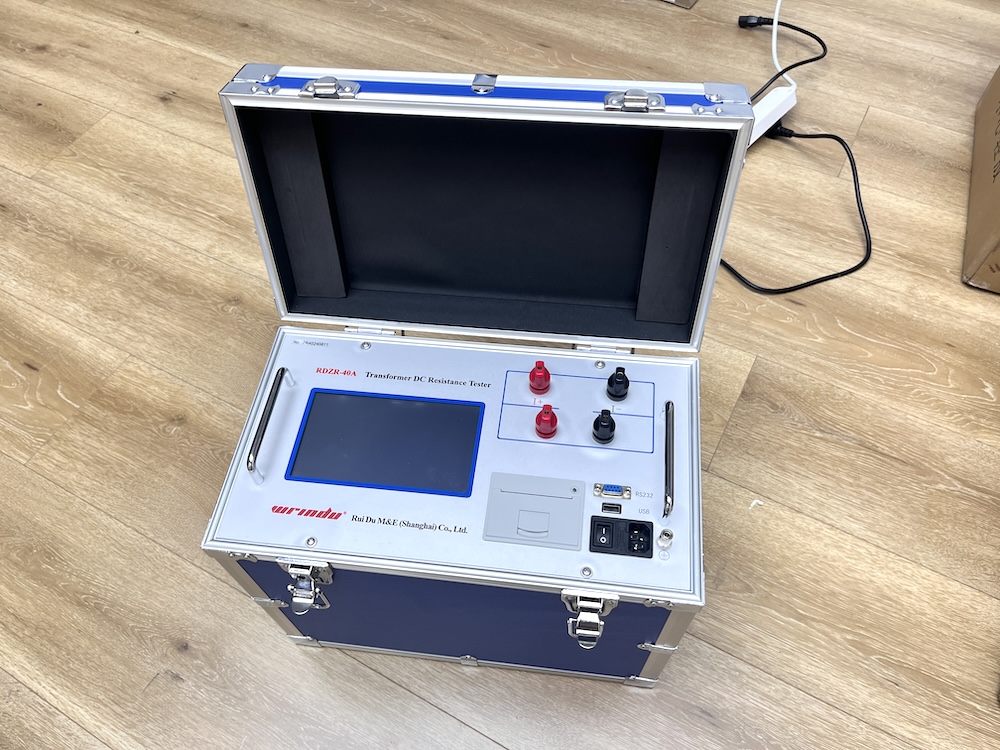The meaning of winding resistance to transformer maintenance
As one of the core devices in the power system, the transformer is essential for the reliable supply of safe and stable operation to power. Problems such as equipment aging and losses have gradually emerged with the extension of the transformer's running time. How to effectively prevent faults and extend the life of the equipment is becoming an important issue facing power engineers. Among the many maintenance methods, the DC resistance test is widely used in routine transformer inspection. As an effective detection method, the DC resistance test can help engineers find potential problems in time and ensure the reliability and safety of the equipment.
1.Fault detection and prevention
Identification Winding defect
The DC resistance test can promptly find potential defects in coil manufacturing through the resistance value of the transformer winding. Common problems include poor welding, loose wiring, shortage of stocks, or disconnects. These defects may cause local overheating, short -circuit or equipment failures during the operation of transformers. By regularly measuring the DC resistance, engineers can find abnormal fluctuations in the resistance value to promptly identify the structural defects of the winding during the production process. Effective early failure diagnosis can avoid large-scale stops or expensive maintenance costs and ensure the stable operation of the power system.
Monitoring running status
DC resistance testing is not limited to discovering equipment defects; it is also an essential means of monitoring the operating status of the transformer. During the device's long-term operation, the transformer's winding will age due to factors such as load fluctuations and temperature changes, and the resistance value will change. Regular DC resistance testing can help engineers monitor the transformer's health and find abnormal conditions caused by overheating or overload. Especially under high-load operation or extreme climatic conditions, the winding may suffer additional stress, resulting in significant changes in resistance. Tests can be used as a basis for preventive maintenance, and measures are taken in time to prevent failure.
2. Performance assessment
Evaluate contact quality
The contact quality of connection parts, such as switching and wiring terminals in the transformer, directly affects the operating stability and efficiency of the device. DC resistance tests can detect the resistance value of these contact points, ensure good contact, and avoid problems such as increasing resistance and local heat due to poor contact. Especially when the transformer has a significant load fluctuation, poor contact will cause the local temperature to be too high, which will cause device damage or decreased efficiency. Therefore, regularly passing the DC resistance testing of the contact point's electrical performance can help ensure the transformer's reliability under different operating conditions.
Judge electrical balance
Each phase winding of the transformer should maintain electrical balance, and any phase resistance value abnormality may signal problems such as wind damage and poor electrical connection. By comparing the DC resistance value of the three-phase winding, engineers can judge the electrical balance of the transformer. If a specific phase resistance is abnormal, it may mean that the phase winding group has faults such as local short-circuit, inter-turning short circuit or damage. The problem of imbalance between electrical imbalances in time can avoid the overload, fever or acceleration aging of the equipment caused by uneven load, thereby improving the transformer's operating efficiency and service life.
3. Test method and precautions
Use a three-phase DC resistance tester.
Modern transformers usually use a three-phase dwelling resistance tester to improve testing efficiency and ensure testing accuracy. This test instrument can measure the resistance of the three-phase winding simultaneously, avoid the tediousness of traditional single-phase measurement methods, significantly improve detection efficiency, and reduce human errors. The accuracy of the test instrument directly determines the reliability of the test results. Therefore, engineers should choose high-precision and robust anti-interference test equipment to ensure the accuracy of each test.
Make sure the test conditions are stable.
The accuracy of the DC resistance test is affected by various factors, and the temperature and environmental conditions are critical. The temperature change of the winding directly affects the measurement of the resistance value. Therefore, the winding should be maintained at a stable temperature before testing. Generally, the DC resistance test needs to be performed in the transformer's air load cooling state to avoid the test results' temperature. In addition, the humidity and air pressure of the external environment may also affect the test results. Engineers need to thoroughly consider these factors before the test to improve the accuracy of the test data.
As an essential detection method in transformer maintenance, the DC resistance test can help power engineers find potential problems in the operation of the transformer in time and provide reliable data support for subsequent maintenance decisions. Through regular DC resistance testing, the contact quality, electrical balance and operating status of the transformer can be effectively evaluated to avoid equipment failure and improve the operating efficiency and safety of the equipment. With the increasingly complex operating conditions of power equipment, DC resistance testing will continue to play an important role and become one of the critical technologies to ensure the reliable operation of the power system.





